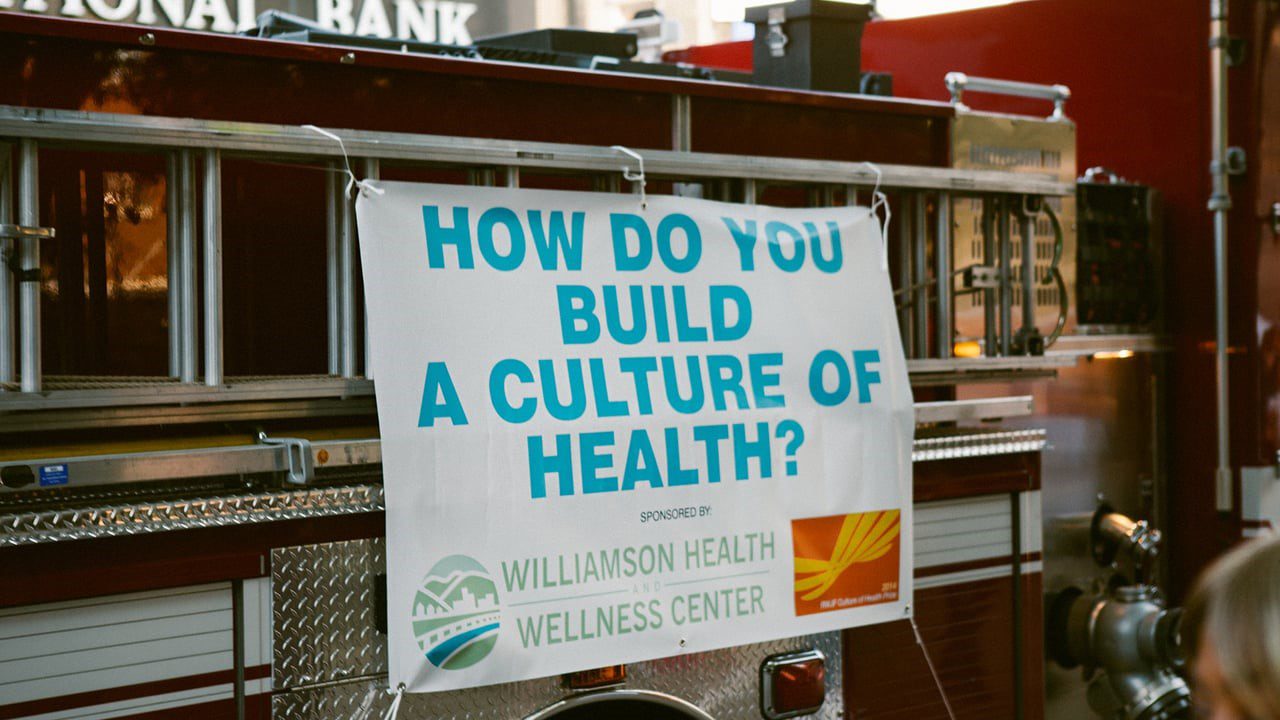Editor’s note: Bread Blog is running a weekly, year-long series called the Nourishing Effect. It will explore how hunger affects health through the lens of the 2016 Hunger Report. The report is an annual publication of Bread for the World Institute.
By Todd Post
“We’re saying let’s get healthy together,” explains Darren McCormick, the mayor of Williamson, the largest town in Mingo County, West Virginia, and the epicenter of an outstanding effort to transform the self-image of a community — from poor health and persistent poverty to good health and a sustainable future.
Mingo County is located in the heart of Central Appalachian coal country. At first blush, it would seem to be the most unlikely of places to be described by the word “sustainable.” Mingo County is one of the poorest, unhealthiest counties in West Virginia. The early death rate is one of the highest in the nation. Almost 40 percent of adults are obese, and the child obesity rate is not much better. One in three of fifth graders have been diagnosed with high blood pressure.
Fifty years ago, Mingo County, by virtue of its location in Central Appalachia, was one of the proving grounds in the War on Poverty. Politicians from Washington, DC, came to the region and said, “We’re going to end poverty in Appalachia.” But poverty wasn’t ended here, and many people who live in the region feel they’ve been stigmatized as losers ever since.
It’s a mindset that McCormick says he shares. And yet he’s thankful for the support provided by federal programs such as SNAP and WIC. In the early 1960s, there was rampant hunger and severe malnutrition in the region, and the social programs created to address those hardships did erase them for the most part. But what the War on Poverty failed to do was to help diversify the economy to be less dependent on coal.
Geologists predict that it will be only another two to three decades before the county’s coal reserves run out. Thus, sustainability is more than leaders recognize that if the place is not only going to survive, but also thrive, residents have to transform the way they see themselves. So the town’s message is designed to give people hope. “Our mission statement isn’t individual projects anymore,” McCormick said. “Our project is creating a more sustainable way of life.” If it sounds like a long shot to some outsiders, you won’t find many people in town without hope.
One priority is stemming the diabetes epidemic. “Health, quality of life, and economic development issues are inseparable,” says Dr. Christopher D. Beckett, who grew up in Williamson. Mingo County is located in what is sometimes called the nation’s diabetes belt: 644 counties spanning 15 states. For the country to halt the rising costs of health care, it will have to develop innovative approaches to managing diabetes. In 2011, the Mingo County Diabetes Coalition was established with support from a federal grant to pilot such approaches and ultimately reduce the cost of diabetes to the Medicaid and Medicare programs. The Centers for Disease Control and Prevention reports that if current trends continue, as many as 1 in 3 U.S. adults could have diabetes by 2030.
Beckett has gotten patients to eat healthier by prescribing (literally writing prescriptions for) a diet high in fruits and vegetables. The Mingo County Diabetes Coalition provides patients with vouchers to purchase the food. Much of that shopping is done at the Williamson farmers market since the town is a classic example of a rural food desert. The closest full service grocery store is more than 30 miles away. The farmers market, started in 2012, was designed not only to improve access to healthy foods but also to be part of an economic development strategy. The farmers market now provides a source of income for local growers.
Healthy food is central to promoting the message of a sustainable future. Because of the market, and the new community gardens that have also been created, students at the middle school in Williamson — 80 percent of them on free or reduced price meals — have asked their principal to create an agriculture program at the school. An orchard has been built on an abandoned strip mine. A small-business incubator program is helping a local entrepreneur open a restaurant that will provide the first genuinely healthy menu in town. “If you had asked people where to go to eat, the only places they might know are McDonald’s and Wendy’s,” says Beckett.
“It’s one of the best grassroots efforts I have ever seen,” said Tracey Rowan, area director of the U.S. Department of Agriculture. “At their meetings, the excitement is contagious. I’ve never seen anything like it. It’s likely to succeed and likely to last, in great part because these people are committed to living and working there.”
Sustainable Williamson has captured the imagination of people in the community, and it has also captured the attention of people outside the community. In 2014, Williamson was one of six communities around the country to receive the Robert Wood Johnson Foundation Culture of Health Prize for Innovative Efforts to Improve Health. “It is tempting to look at this area and think about everything that’s wrong with it and get discouraged,” says Beckett. “But there is also a different way of looking at it. Seeing these problems as opportunities.”
Todd Post is the senior researcher, writer, and editor in Bread for the World Institute. This feature is adapted from a story that originally appeared on pp. 94-95 of the 2016 Hunger Report: The Nourishing Effect.
Photo courtesy of Sustainable Williamson.



